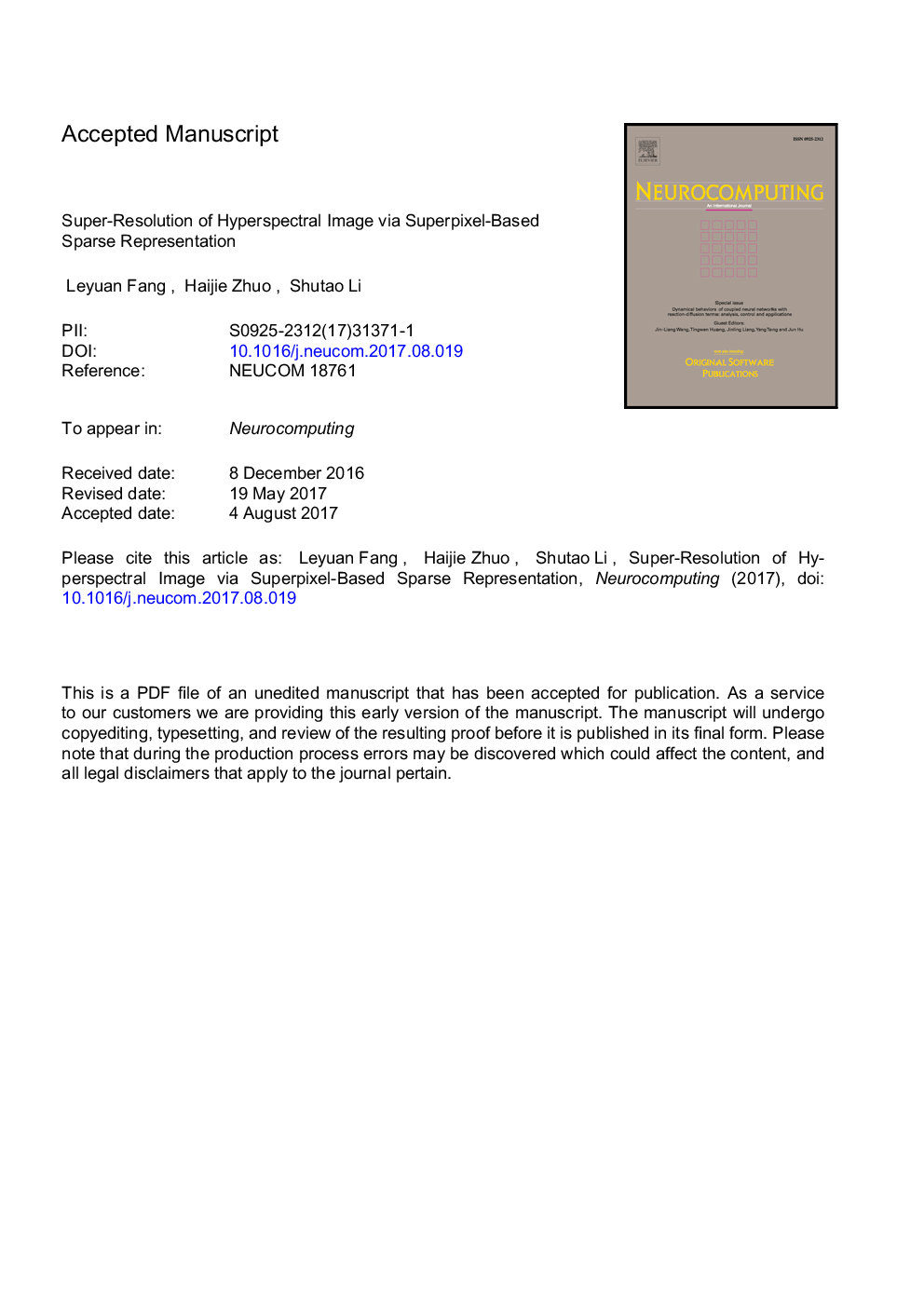| Article ID | Journal | Published Year | Pages | File Type |
|---|---|---|---|---|
| 6865073 | Neurocomputing | 2018 | 20 Pages |
Abstract
In this paper, a novel superpixel-based sparse representation (SSR) model is proposed for hyperspectral image (HSI) super-resolution. Specifically, given a HSI with low spatial resolution and a multispectral image (MSI) with high spatial resolution, the proposed SSR approach first learns a spectral dictionary from HSI and constructs a transformed dictionary corresponding to MSI. Then, the SSR method clusters the MSI into superpixels, whose shape and size can be adaptively adjusted according to the local structures. Since pixels within each superpixel have strong similarities, the SSR method simultaneously decomposes them on the transformed dictionary to generate the corresponding fractional abundance coefficient matrix, which can exploit the similarities within the superpixel to improve the sparse decomposition. Finally, the high resolution hyperspectral image can be reconstructed with the obtained fractional abundance coefficient matrix. Experimental results show that the proposed approach is superior to some well-known HSI super-resolution methods.
Related Topics
Physical Sciences and Engineering
Computer Science
Artificial Intelligence
Authors
Leyuan Fang, Haijie Zhuo, Shutao Li,
